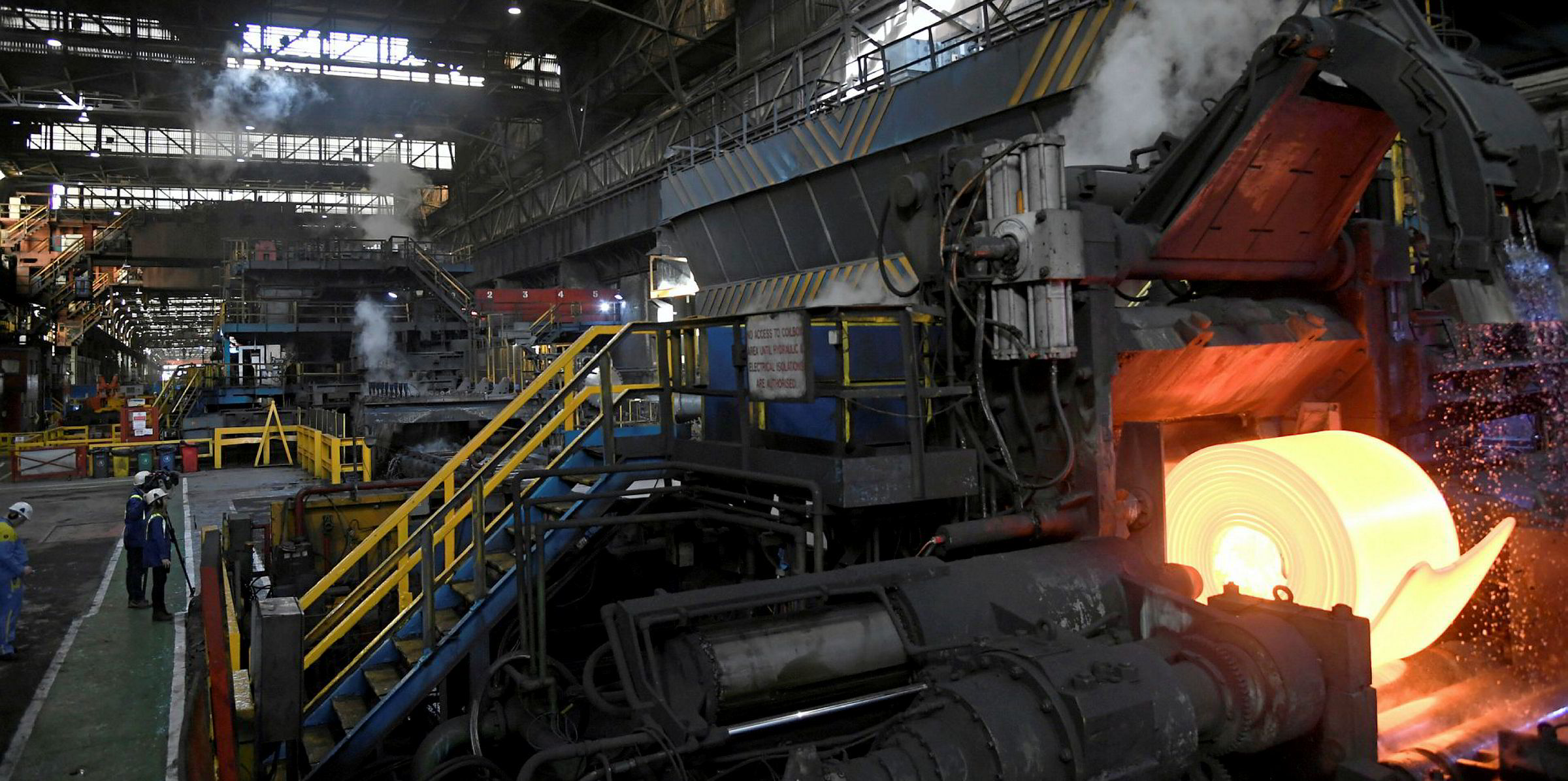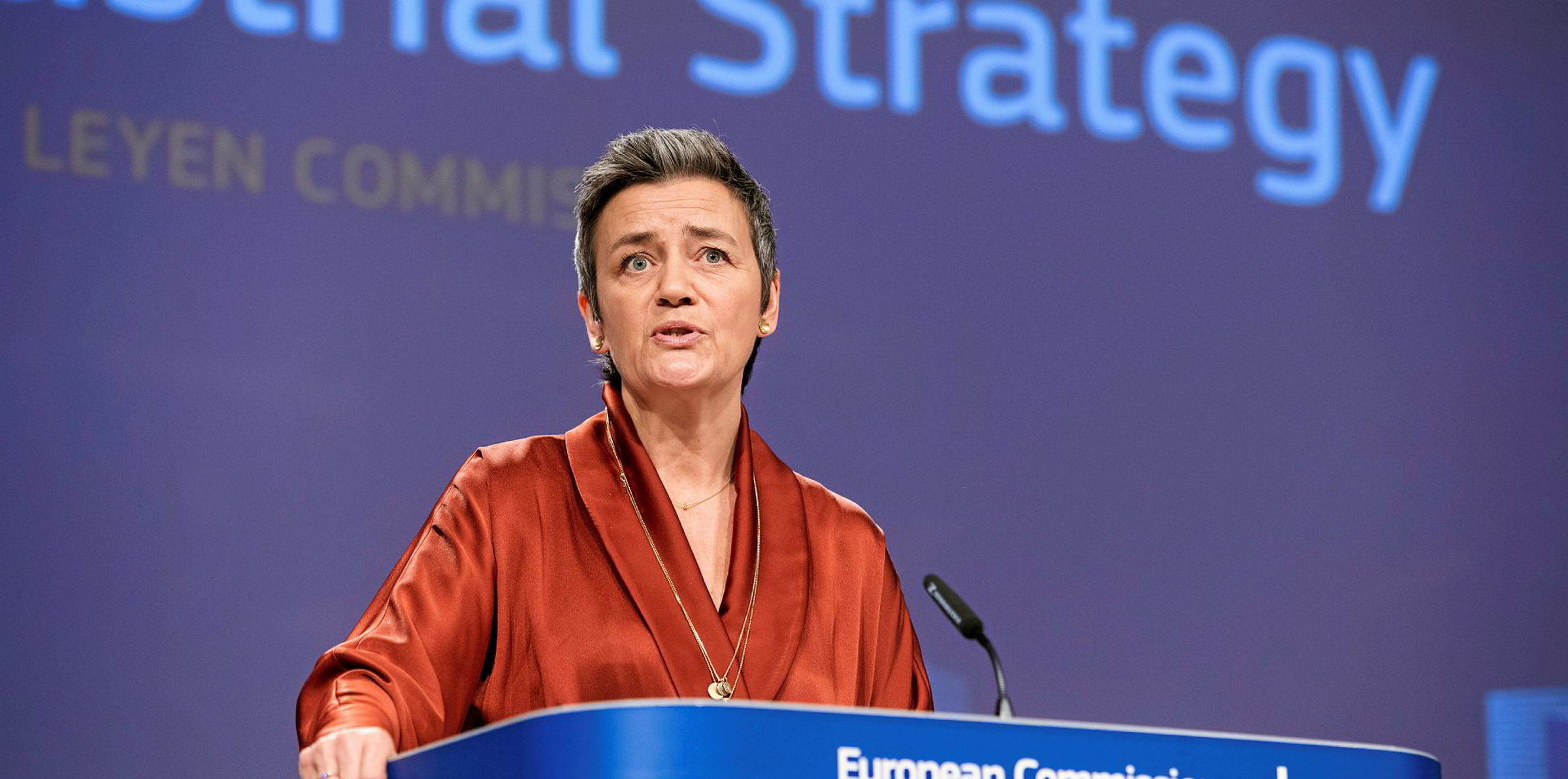‘World first’ as hydrogen used to power commercial steel production
Trial at a commercial steel mill in Sweden shows that clean-burning H2 can replace the fossil fuels currently used to produce high-temperature heat

A steel rolling mill in the UK.Photo: AFP/Getty
28 April 2020
By Leigh Collins
Hydrogen has been used to power commercial steel production for the first time, replacing liquefied natural gas (LNG) as the source of high-temperature heat at a pilot project in Sweden.
Swedish steel maker Ovako’s trial at its Hofors steel mill, in conjunction with hydrogen producer Linde Gas, showed that H2 had no affect on the quality of steel.
“This is a major development for the steel industry,” said Göran Nyström, executive vice-president of group marketing & technology at Ovako. “It is the first time that hydrogen has been used to heat steel in an existing production environment. Thanks to the trial, we know that hydrogen can be used simply and flexibly, with no impact on steel quality, which would mean a very large reduction in the carbon footprint.”
The company said that “this historic development for the steel industry proves that carbon dioxide emissions from rolling can be eliminated provided the right financial support and infrastructure are in place”.
“Given the right conditions, Ovako could therefore introduce hydrogen heating for furnaces at all its rolling mills and thereby drastically reduce its already world-leading low carbon footprint from cradle to gate.”
An Ovako spokesperson tells Recharge that to begin such a roll-out, the company would “need to get funding and collaborate with the right industrial partners”.
Ovako already uses electric-arc furnaces powered by renewable energy to melt scrap steel and produce its base product, but LNG to provide the heat at its rolling mills — where pre-produced steel is passed through pairs of rollers that reduce its thickness and makes the thickness uniform.
More than 95% of the world’s hydrogen is today derived from natural gas and coal, causing nine to 12 tonnes of CO2 emissions for every tonne of H2 produced. Although hydrogen is a clean gas, releasing only water vapour when burned, there is no point replacing the coke, coal or LNG used in steel production with H2 unless that hydrogen is produced from renewable energy (green) or if the CO2 emitted in its production is captured and stored (blue).
Both green and blue hydrogen are currently expensive to produce, available in limited quantities and would increase the cost of steel production, so companies are reluctant to make the switch — unless the clean H2 was subsidised in some way.
According to the World Steel Association, the steel industry generates 7-9% “of direct emissions from the global use of fossil fuel”.(Copyright)
Hydrogen has been used to power commercial steel production for the first time, replacing liquefied natural gas (LNG) as the source of high-temperature heat at a pilot project in Sweden.
Swedish steel maker Ovako’s trial at its Hofors steel mill, in conjunction with hydrogen producer Linde Gas, showed that H2 had no affect on the quality of steel.
“This is a major development for the steel industry,” said Göran Nyström, executive vice-president of group marketing & technology at Ovako. “It is the first time that hydrogen has been used to heat steel in an existing production environment. Thanks to the trial, we know that hydrogen can be used simply and flexibly, with no impact on steel quality, which would mean a very large reduction in the carbon footprint.”
The company said that “this historic development for the steel industry proves that carbon dioxide emissions from rolling can be eliminated provided the right financial support and infrastructure are in place”.
“Given the right conditions, Ovako could therefore introduce hydrogen heating for furnaces at all its rolling mills and thereby drastically reduce its already world-leading low carbon footprint from cradle to gate.”
An Ovako spokesperson tells Recharge that to begin such a roll-out, the company would “need to get funding and collaborate with the right industrial partners”.
Ovako already uses electric-arc furnaces powered by renewable energy to melt scrap steel and produce its base product, but LNG to provide the heat at its rolling mills — where pre-produced steel is passed through pairs of rollers that reduce its thickness and makes the thickness uniform.
More than 95% of the world’s hydrogen is today derived from natural gas and coal, causing nine to 12 tonnes of CO2 emissions for every tonne of H2 produced. Although hydrogen is a clean gas, releasing only water vapour when burned, there is no point replacing the coke, coal or LNG used in steel production with H2 unless that hydrogen is produced from renewable energy (green) or if the CO2 emitted in its production is captured and stored (blue).
Both green and blue hydrogen are currently expensive to produce, available in limited quantities and would increase the cost of steel production, so companies are reluctant to make the switch — unless the clean H2 was subsidised in some way.
According to the World Steel Association, the steel industry generates 7-9% “of direct emissions from the global use of fossil fuel”.(Copyright)
RELATED NEWS
A wake-up call on green hydrogen: the amount of wind and solar needed is immense
Transition
19 March 2020 12:23 GMT
Why green hydrogen is key to the global energy transition
Transition
10 February 2020 14:56 GMT
Fossil-free steel takes 'important step' with H2 pilot storage tank
Transition
3 October 2019 7:52 GMT
'Green hydrogen could be cheapest form of H2 within five years'
Transition
10 February 2020 10:26 GMT
12 January 2020 6:26 GMT
Merkel cabinet split on green vs blue hydrogen dilemma
Transition



No comments:
Post a Comment